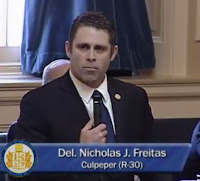I love that the new Come Follow Me manual is completely choose your own adventure:
Use this resource in any way that is helpful to you.
-page vi
People's needs are so varied; I love that they say up front that there's no wrong way to use the book: do what works for you. And it need not replace good things you are already doing in your home:
You and you family may already be studying the gospel regularly. Maybe you have a goal to read the Book of Mormon. Or maybe you are reading another book of scripture for a seminary or institute class. Come, Follow Me is not meant to replace or compete with the good things you are doing. ... Follow the Spirit's guidance to determine how to approach your own study of the word of God.
-page vi
Even the schedule is explicitly optional:
The schedule will help you keep up with the material covered in Sunday classes, but don't feel bound by it; the schedule is simply a guide to help you pace yourself. The important thing is that you are learning the gospel individually and as a family.
-page vi (emphasis added)
That last sentence bears repeating: The important thing is that you are learning the gospel individually and as a family. If we are studying the gospel, we are successful. It's that simple. The point is not to answer every question, to read every chapter start to finish, or to stay in lockstep with the class: the point is conversion to Christ, and conversion is a very personal process, a journey that we each take starting where we are right now, and moving toward Him.
The next few pages, before the lesson outlines start, cover a nice list of possible ways we could choose to study the scriptures: marking verses that deal with the teachings of the Savoir, doing word studies (I shared my work with the word humility a while back), likening scriptures to ourselves, recording your thoughts, feelings, and what you've learned in a journal, studying the scriptures in tandem with the words of modern prophets and apostles (like this verse President Monson used in one of his talks). They've got a pretty good list, but the magical thing about the scriptures is that there's a whole host of good ways to study them. One of their suggestions I like best is to share insights and put things in your own words, and they say:
Discussing insights from your personal study is not only a good way to teach others, but it also helps strengthen your understanding of what you have read.
-page viii
Basically, what they're recommending here is narration, and that really is a powerful tool: to tell back what you have read, you have to have paid attention, to have understood, and assimilated it to the point that you can give it your own words. I love blogging about things that I'm learning precisely because the process of writing what I've learned is so powerful: it cements in my mind the ideas. But verbal narration is a similarly powerful tool, and in harnessing it, we draw the scriptures deeper into ourselves and help our children draw them deeper into them as well. Keeping it simple: read the chapters, tell it back, and talk about it a little, is what we plan to do. In my experience, simple plans easily executed work better and longer than fancy stuff that requires printouts and preparation. We like it simple: just the scriptures.
However. Academic knowledge gained on our own, as families, or in class is only half the equation: the things we learn need to become the guides for our conduct. It is in the application of scripture that we truly become Christian. Reading is the start, and after that we must live it.
But be ye doers of the word, and not hearers only...
-James 1:22

This post is part of a series.
Click the button below to go to the series index.































